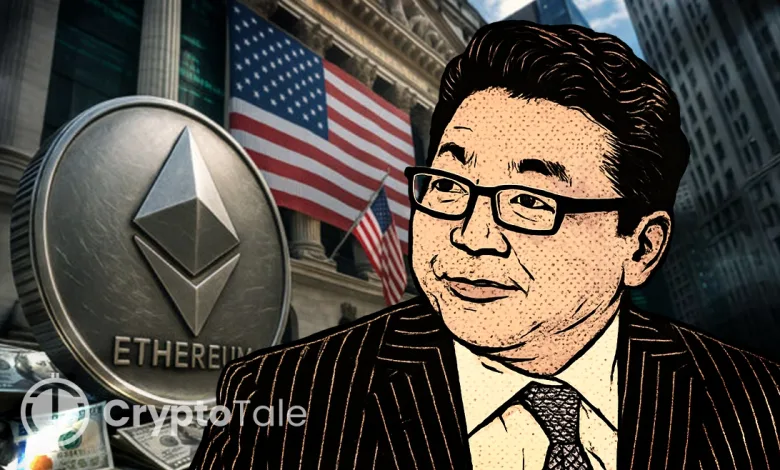Ethereum at an Inflection Point: Can it Deliver Its “Wall Street Moment”?

- Tom Lee compares Ethereum’s growth to Wall Street’s rise after the end of gold standard in 1971.
- BitMine’s Ethereum treasury highlights growing institutional confidence in ETH’s financial role.
- Analysts view ETH as key to stablecoin growth under the GENIUS Act and SEC’s Project Crypto.
When the United States left the gold standard in 1971, most observers focused on gold. Yet, the lasting winner was Wall Street. The shift allowed financial institutions to expand infrastructure, trading systems, and new markets. That transformation reshaped the financial world. Today, some analysts argue that Ethereum may stand at a similar turning point.
Fundstrat’s Thomas (Tom) Lee compared Ethereum’s moment to 1971’s transformation. He noted the White House GENIUS Act and the SEC’s Project Crypto could spark sweeping changes. According to Lee, this new digital framework could position Ethereum as the foundation for modern financial rails.
Ethereum’s Expanding Role in Financial Infrastructure
Ethereum is increasingly becoming the backbone for stablecoins, tokenization, and decentralized applications. Institutions now view it as the digital equivalent of Wall Street’s settlement and trading systems. Some analysts say Ethereum hosts the most stablecoin activity. They believe this positions Ethereum as a key beneficiary of the anticipated expansion in tokenized assets.
The passage of the GENIUS Act set clear rules for stablecoin issuance. This regulation gives Wall Street confidence to issue massive amounts of tokenized dollars. Even if stablecoins move onto layer-2 networks, JPMorgan analysts see Ethereum benefiting directly or indirectly. They highlighted Ethereum’s ability to act as the main layer for digital money markets.
Ethereum’s value may rise as the demand for stablecoins increases. With most of the infrastructure built on Ethereum or its scaling networks, adoption could accelerate further. Analysts see ether as a direct way for investors to gain exposure to this shift.
BitMine’s ETH Treasury and Institutional Momentum
BitMine has become the largest Ethereum treasury globally. It recently surpassed $6.6 billion in ETH holdings. The company added more than 373,000 tokens in just one week. This rapid expansion highlights rising institutional interest in Ethereum.
Lee, who also chairs BitMine, said institutions are supporting their strategy. He described the company’s pursuit of “alchemy of 5% of ETH” as a long-term goal. BitMine’s strategy includes building liquidity and raising its crypto net asset value per share. The company claims it leads other crypto treasuries in both speed and scale.
The rapid accumulation of ETH by BitMine signals a broader institutional shift. Many investors are looking beyond Bitcoin and turning to Ethereum as the backbone of future finance.
Related: Ethereum Holds Firm While Bitcoin Slides After PPI Data Release
Can Ethereum Deliver Its “Wall Street Moment”?
Lee argued that Ethereum is one of the biggest macro trades for the next 10 to 15 years. He believes that Wall Street and artificial intelligence moving onto blockchain will drive financial transformation. Ethereum, he suggested, will be central to that change.
The parallels with 1971 are striking. Just as Wall Street built new rails for payments, trading, and asset issuance, Ethereum could do the same digitally. The GENIUS Act and Project Crypto provide the regulatory framework.
Still, challenges remain. Ethereum needs to scale up to handle large volumes. It should also be able to strike a balance between decentralization and regulatory compliance. While its infrastructure is expanding, competing blockchains are also seeking institutional adoption. Whether it can deliver a “Wall Street moment” will depend on regulation, infrastructure, and continued institutional trust.




